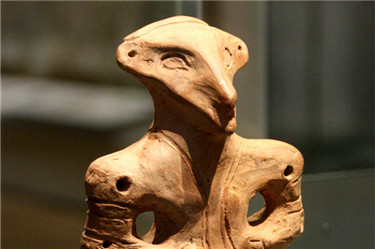
Photo credit: Michel wal
圖片引自: Michel wal
8、Vinca Civilization
溫卡文明(長春花文明)
Europe’s biggest prehistoric civilization, the Vinca, existed for nearly 1,500 years. Beginning in the 55th century B.C., they occupied land throughoutSerbia and Romania. Named after a present-day village near the Danube River, where the first discoveries were made in the 20th century, the Vinca were a metal-working people, perhaps even the world’s first civilization to use copper (they also excavated the first mine in Europe).
歐洲最大的史前文明,溫卡,存續(xù)近1500年之久。從公元前55世紀開始,他們占據(jù)了遍及敘利亞和羅馬尼亞的土地。首次發(fā)現(xiàn)于20世紀,并以發(fā)現(xiàn)地,多瑙河附近一當代小鎮(zhèn)的名字命名。溫卡人是一個從事金屬加工的民族,他們或許是世界上最早使用銅的文明(他們同樣采掘出了歐洲的第一桶礦產(chǎn))。
Though the Vinca people had no officially recognized form of writing, examples of proto-writing, symbols which don’t actually express language, have been found on various stone tablets which date as far back as 4000 B.C. In addition, they were artistic and fond of children; archaeologists have found various toys, such as animals and rattles, buried among the other artifacts. They were also extremely organized—the houses of the Vinca civilization had specific locations for trash, and the dead were all buried in a central location.
雖然溫卡人的存在無法從文字、類文字圖樣、甚至那些算不上語言的符號中得到正式承認,但的確發(fā)現(xiàn)有許多的石碑可以作證其存在,這些石碑可追溯至公元前4000年。另外,他們充滿藝術氣息并且喜歡孩子,考古學家發(fā)現(xiàn)了許許多多的玩偶,如動物和搖鈴,這些玩偶與其他手工制品埋在一起。他們還非常的有組織性——溫卡文明的房屋都有特定的垃圾丟棄點,并且死去的人全都被埋在一個中心地點。











